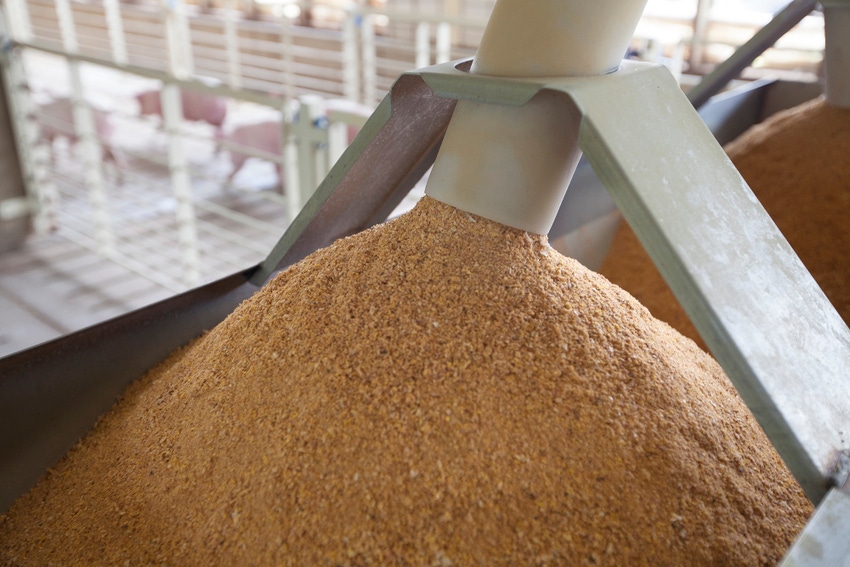Soy checkoff-funded study confirms value of soybean meal as a primary protein source.
August 11, 2021

Within the last 20 years, soybean meal (SBM) inclusion levels in pig diets have become heavily dependent on pricing. This is at the detriment of overlooking the value of SBM beyond its primary attributes as a source of amino acids. Shifting diets to higher inclusion levels of crystalline amino acids and distillers dried grains with solubles (DDGS) — a 35% increase between 2000 and 2017 — hinders soy’s beneficial components, such as isoflavones, saponins and phenolic antioxidants. These vital compounds improve immune responses, provide anti-inflammatory benefits and enhance growth performance of pigs exposed to viral disease challenges.
Presented at the International Conference on Swine Nutrition on Aug. 11, results from a soy checkoff-funded study, “Evaluation of the Potential Benefit of Soybean Meal on Gain and Feed Efficiency of Growing Pigs,” among several other independently evaluated, unbiased studies confirmed an economic return and direct and positive relationship between SBM and improved total weight gain and feed use efficiency in developing pigs. The publicly available capstone study also revealed that soy’s health benefits are more pronounced when swine experience respiratory health challenges, which could be of greater importance during summer months when the average daily gain is important to achieve market weights.
“This checkoff-supported study points out that formulating for least cost doesn’t always add up to maximum profit, especially in the volatile commodity markets that face the swine sector right now,” said Dean Boyd, Ph.D., a consulting animal nutritionist, adjunct professor of animal nutrition at North Carolina State University and Iowa State University, and a principal investigator for the study. “With pricing as the dominant factor driving ingredient decisions, little consideration is given to the intrinsic value of soybean meal, which offers an essential source of health-promoting compounds and amino acids.”
In a recent National Hog Farmer article, Eric van Heugten, Ph.D., at North Carolina State University, who’s a collaborator on the project, reported that grower pigs starting at about 85 pounds fed a reduced SBM diet had a 2.46-pound lower body weight at the end of the study compared to pigs fed the higher SBM diet, even after balancing for amino acids. And replacing SBM with lysine·HCl (plus other crystalline amino acids) reduced final body weight by 5.71 pounds.
“This research indicates that there are limits to how much soybean meal can cost-effectively be eliminated from pig diets,” explained Rochelle Krusemark, a soybean farmer who manages a custom hog feeding operation in Sherburn, Minnesota, and Meal Target Area coordinator at the United Soybean Board (USB). “It is very difficult to replicate the naturally balanced value bundle of soy that animal nutritionists recognize as a staple ingredient in swine and other animal diets.”
Given this direct negative effect when switching pig diets over for a short period of time and reducing SBM inclusion, some nutritionists indicate there may be a SBM level below which growth and feed conversion are compromised that could be impacted by growth phase and health status. Resulting considerations for SBM use contribute to high-quality diets, reduce swine stress levels and enhance animal performance, biology and gut health.
“These experimental outcomes accentuate the importance of soybean meal on growth and feed efficiency for growing and finishing pigs. The applied work takes a step further by estimating minimum soybean meal inclusion levels to maximize growth and potential economic returns for pig farmers,” said Keenan McRoberts, Ph.D., vice president of science and program strategy for USB. “Consequently, this foundational applied work establishes a new starting point for soybean meal use and value in pig rations — work that must be advanced further, together with industry partners, to evaluate implications under different production systems and seasons. We look forward to working with nutritionists and other industry partners to share this foundational work and advance critical next steps.”
You May Also Like



